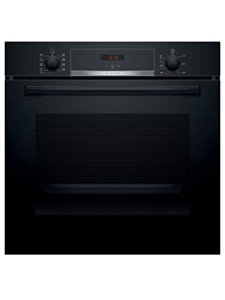The Ultimate Glossary Of Terms About Built-In Oven
페이지 정보
작성자 Leopoldo 작성일25-05-19 19:27 조회8회 댓글0건관련링크
본문

Understanding Built-in Ovens and Hobs: The Perfect Kitchen Combination
As modern kitchens progress, built-in appliances are becoming progressively popular for both performance and aesthetic appeals. Among these appliances, built-in ovens and hobs stand out as vital elements for any culinary lover or home cook. This article checks out the advantages, features, and factors to consider surrounding built-in ovens and hobs. It likewise attends to typical questions, offering a comprehensive guide to these kitchen essentials.
What are Built-in Ovens and Hobs?
Built-in ovens are integrated into kitchen cabinetry, creating a streamlined, smooth look. They come in numerous types, including traditional, convection, and steam ovens, each dealing with different cooking techniques. Hobs, on the other hand, are the cooking surface areas that integrate with the kitchen counter top. They can be gas, electric, or induction, allowing cooks to select based upon their cooking style and energy preference.
Advantages of Built-in Ovens and Hobs
- Space-Saving: Built-in models optimize kitchen area by getting rid of the requirement for freestanding systems, creating an open and airy environment.
- Aesthetic Appeal: Their streamlined style adds to a modern, structured look in the kitchen.
- Enhanced Functionality: built in range oven-in ovens frequently include advanced cooking technology, offering a series of functions like self-cleaning and smart controls.
- Customization: Manufacturers offer a range of finishes and Integrated Oven Hob & Extractor Packages styles, enabling homeowners to tailor their appliances to match their kitchen decoration.
Types of Built-in Ovens
1. Conventional Ovens
Conventional ovens use glowing heat from the bottom and can be ideal for baking.
2. Convection Ovens
Stove have a fan that distributes hot air, making sure even cooking. They reduce cooking time and are best integrated ovens for roasting meats or vegetables.
3. Steam Ovens
Steam ovens use wet heat to cook food, protecting nutrients and flavors. They are becoming progressively popular among health-conscious cooks.
4. Microwave Ovens
These ovens provide quick heating and cooking and serve different functions, from reheating leftovers to baking.
Types of Hobs
1. Gas Hobs
Gas hobs utilize gas or gas for cooking. They offer immediate heat control, making them a favorite amongst professional chefs.
2. Electric Hobs
Electric hobs have strong or ceramic surfaces that heat up by means of electric coils. They are easy to clean however may take longer to heat than gas designs.
3. Induction Hobs
Induction hobs utilize electromagnetic energy to directly heat pots and pans, using quick heating and energy performance. They cool down rapidly and supply a much safer cooking experience.
Elements to Consider When Choosing Built-in Ovens and Hobs
When picking built-in ovens and hobs, numerous elements should be thought about:
1. Area Limitations
Measure the available space in your kitchen to make sure that the appliances will fit flawlessly into the cabinets.
2. Cooking Style
Consider your cooking routines. If you frequently bake, a convection oven might be perfect. On the other hand, induction hobs are excellent for security and effectiveness.
3. Budget plan
Pricing differs significantly based on functions and brand names. Setting a budget assists narrow down the choices.
4. Energy Source
Figure out whether you desire gas or electric appliances. This decision can affect cooking efficiency and integrated oven hob & extractor packages energy costs.
5. Aesthetic appeals
Pick surfaces and styles that match your kitchen's style. Stainless-steel is a popular option for a modern-day appeal.
Comparison of Built-in Ovens and Hobs
| Feature | Built-in Oven | Built-in Hob |
|---|---|---|
| Type | Convection, steam, etc. | Gas, electric, induction |
| Cooking Versatility | High | Moderate to high |
| Cleaning Ease | Differs by design | Typically easy to tidy |
| Installation Style | Integrated Oven Hob & Extractor Packages [Https://Wifidb.Science/] in cabinets | Flush with counter top |
| Energy Efficiency | Differs by design | Induction generally most effective |
Frequently Asked Questions About Built-in Ovens and Hobs
1. Are built-in ovens more costly than freestanding models?
Yes, built-in fitted ovens normally come with a higher cost tag due to their design and setup requirements. Nevertheless, they frequently offer more advanced features.
2. Can I change my existing freestanding oven with a built-in model?
Yes, it's possible to change a freestanding oven with a built-in design, however you may need to make modifications to your cabinets and kitchen design.
3. What maintenance do built-in ovens and hobs require?
Regular cleansing is essential. Many built-in ovens included self-cleaning functions. It's likewise crucial to keep the hobs complimentary of spills and grease.
4. Are induction hobs safe for families?
Induction hobs are considered safer than gas or electric alternatives because they just warm the pots and pans, minimizing the threat of burns or accidents.
5. How can I maximize the efficiency of my built-in oven and hob?
To maximize performance, constantly pre-heat the oven when required, use the proper size pots or pans on the hob, and consider using the recurring heat from your hob after cooking.
Built-in ovens and hobs offer many advantages, making them popular choices for modern kitchen areas. Their space-saving designs, advanced features, and aesthetic appeal contribute to their high demand. By thinking about aspects like space, cooking design, and spending plan, homeowners can pick the perfect mix of appliances that best match their cooking requirements. Whether through gas, electric, or induction hobs, and a variety of oven types, the right built-in kitchen appliances can boost the cooking experience while elevating the general aesthetic of the kitchen.

댓글목록
등록된 댓글이 없습니다.












